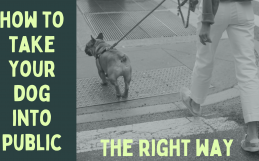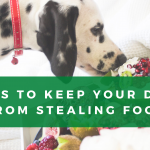Feed Your Dog Better | Dog Training
Change Your Dog’s Diet For Improved Health and Longevity
Making The Choice
When you first bring home your puppy or adult dog, one of the first things you’re probably thinking about is, what food should I feed him/her?
Maybe you’ll contemplate keeping them on whatever kibble or raw diet the breeder/shelter had them on, or you may have another dog in your home and want all your pets on the same brand. A lot of factors go into this decision.
Dogs are acclimated to digesting natural foods such as meats, veggies, dark leafy greens, and fruits. Much similar to what they would be eating running free throughout mother nature.
Implementing A Raw Diet | How Is It Beneficial?
The benefits of a raw diet include less skin allergies, less food allergies, proper nutrition, more longevity, and more balanced emotion and behavior. Many kibbles have quite a high sugar content which builds cancer and inflammation within your dog’s body. Although they may not be able to constantly feel that pain, it can eat away at them over time.
Three Words: Add A Salad
Didn’t think it would be that simple did you? Believe it or not, it is.
Your dog’s body thrives on natural food sources similar to what they’d eat if they were out in the wild.
I know what you’re thinking…you can’t picture your dog eating a salad. But when you hear the word salad, you think healthy, right? It may be funny to think about, but that’s exactly what it is for dogs! Healthy and nourishing.
Raw Foods | What Is Safe For My Dog?
Now when I say salad, I’m not talking about a head of iceberg lettuce. They’ll need about 70% dark leafy greens and 30% orange and/or yellow veggies. To give you a better idea, here are a few examples for both:
- Kale
- Spinach
- Mustard greens
- Dandelion greens (yes, straight from your yard!)
- Carrots
- Pumpkin
- Squash
You can even throw in the butts of your dinner veggies like green beans, sweet potatoes, or zucchini too!
Fruits
Implementing fruits such as blueberries, raspberries or strawberries into your salad mixture or even frozen in your dog’s kibble is great too. Although fruits are high in antioxidants and are just as important for your dog’s health as vegetables, they do contain sugar so it’s important to provide them in moderation.
Meats
Your dog can have just about any raw meat out there, but it’s important to pay attention to any food or skin allergies that may occur while your dog is transitioning.
Beef, duck, sardines, turkey, chicken, and pork are the most common for a raw diet.
You may already know of some things that irritate your dog, so having a raw meat diet allows you to be pretty selective at the grocery store to fit your dog’s needs.
Bones
Your dog actually needs raw bones as a part of their diet but be sure they are indeed raw and NOT cooked. Cooked bones tend to splinter which causes a choking hazard. Acceptable examples would be bones within meats, pork, or chicken.
A very common raw diet myth is concerns of your dog dying from ecoli, salmonella, etc. These are NOT true. Nor is it true that it’ll spread any disease or germs to family members, especially children.
Helpful Tools | Calculating Food Portions
If you’re feeling a little overwhelmed with all of the information I just gave you, fret not! We know a raw diet isn’t for every dog, but if you’re willing to give it a shot, we have an excellent tool to make your life easier.
Krystal has developed an Ebook called “The Primal Diet” with everything you need to know about calculating portions based on your dog’s weight and body type.
You can view The Primal Diet ebook here.
You’ll not only be able to calculate the proper portion sizes to fit your dog’s nutritional needs, but there is also a shopping calculator that allows you to map out how many days of food you want to shop for and it will show you exactly how much of each ingredient to get.
Real Results
You may be thinking, how do we know raw diet benefits work?
Well, Krystal and Eric can speak from experience. Their family dog, Morgyn, actually had her own success story! Morgyn suffered from a patch of facial skin cancer for two years that disappeared in nineteen days after transitioning her to a raw diet.
Yes, a raw diet made her cancer disappear! In less than a month, and it hasn’t been back since!
Still Rather Stick To Kibble?
If you’re still unsure if a raw diet is right for your dog and you’d rather stick to kibble, we totally understand. You may even want to implement 20% raw and 80% kibble. That’s completely fine too!
Raw diets are much more involved and if that doesn’t fit your lifestyle, that doesn’t mean you’re sacrificing your dog’s health by feeding him/her kibble. You can still research the best brands and educate yourself on beneficial ingredients to choose the best food to buy without breaking the bank.
Kibble Ingredients | Sugar Content
Dogs are omnivores. So in the wild, they will eat meat. Inside of that meat they have vegetables, fruit, and other plant life that animal has eaten as they scavenge. That’s why your dog may eat grass or plants while outside.
But regardless of the kibble you purchase, it needs starch to hold everything together. That starch will start to break down into a carb when eaten, which will then break down to a sugar in your dog’s body. That’s where the sugar content comes from and it’s important to make sure your dog’s kibble isn’t too high in it.
How To Choose
The average sugar content in a “common” kibble brand can range anywhere from 30-70%, most commonly in the 45-50% range. Unfortunately, dog food companies are not required to list their sugar percentage on their ingredients list. When looking for a new kibble for your pup, you’ll find on the back of the bag what is called the “guaranteed analysis”. This will list percentages of things like the crude protein, crude fat, crude fiber and moisture etc. When you add up the listed crude ingredient percentages and subtract that from 100%, the remaining number will be it’s sugar content.
Dog Food Advisor
Dog Food Advisor (click for link) is a website we recommend to many of our clients to help them judge whether or not what they’re currently feeding, or what they would like to switch to, is good quality kibble. (We generally recommend a kibble that is 4 stars and up.)
Their website ranks the kibble on nutrition profiling versus cost. You may be able to get some really great brands out there, but they’ll put quite the dent in your bank account. On the flipside, you can purchase cheap kibble and have no real nutritional value. This allows you to research and balance those factors out to get the best bang for your buck.
They also use a ranking system to track any recalls on that specific brand or food choice so you can be 100% sure you’re shopping with confidence.
 Treats
Treats
We recommend using your dog’s regular daily diet foods as treats instead of anything artificial. Should you wish to buy something, just be sure it’s derived from natural ingredients as opposed to a biscuit treat or something high in sugar content.
You can give your dog portions of their daily salad allotment like shredded carrots, small pieces of raw meat like salami or freeze dried sardines, vegetables like sweet potato butts, or even their kibble.
Food Breakdown
Dogs break down raw food more efficiently, meaning it only takes a couple of hours from start to finish to break down within your dog’s body. Kibble can take nearly eight hours or longer, sometimes even twelve hours to fully break down and process because it’s not natural for them. Their body has to work extra hard to get what it needs from those kibbles to benefit them. So that’s why you may see the loose stool and upset tummies when changing kibbles.
How To Transition | Step By Step
If you’ll be switching your dog to a new kibble or a raw diet, you’ll want to be sure you introduce it in a slow process so that it doesn’t upset their digestion. Although a fully raw diet is great for your dog, their bodies will recognize this as different food when it was previously used to breaking down and digesting just kibble. Easing them into the transition is still ideal.
This will also be a time where you’ll need to pay attention to your dog’s stool, because if it appears runny, that will indicate that the transition is too fast. Here is a timeline we recommend:
- Begin with 80% of the old food and 20% of the new. You’ll continue this process for a few days and it usually shouldn’t pose any digestive issues. But again, be sure you’re observing your pup to check for any allergic signs or uncomfortability.
- After a few successful days have passed, transition to 50% old food and 50% new food. You’ll continue this for another few days.
- Once you’ve also gotten success from the 50/50 ratio, you’ll switch to 20% old food and 80% new food. Continue once again for another few days.
- Finally, you’ll switch to 100% new food.
Recap
Whether you’ve chosen to try out a raw diet for your dog, stick to kibble, or go a little in between, we hope these tools and recommendations can help ease you into making a great food choice for your furry friends. We wish you and your dog a long life of health and happiness! 🙂
Still need help? – Post a comment
Leave a comment below if you need clarification on anything or if you have any other questions about your puppy.
Find “How To” Dog Training Videos HERE:








